
AI Content Creation
Creator Myth Evolution: Ancient to Modern Beliefs

Contents
The creator myth evolution reflects humanity’s timeless quest to understand the origins of the universe and our place within it. From ancient tales whispered around campfires to modern interpretations woven into global cultures, these myths have transformed dramatically over time. They serve as windows into human imagination, spirituality, and societal values. This article delves into the fascinating journey of creator myths, exploring their origins, transformations, and enduring influence. By examining key examples and their cultural significance, we uncover how these stories continue to shape beliefs today. Let’s embark on this exploration with curiosity, tracing the threads of creator myths through history.
What Are Creator Myths?
Creator myths are narratives that explain the origins of the world, humanity, and the cosmos. Often rooted in oral traditions, these stories vary widely across cultures but share common themes: chaos transforming into order, divine beings shaping existence, or natural forces birthing life. They provide meaning, purpose, and a framework for understanding existence. Over time, the creator myth evolution has seen these tales adapt to reflect changing societal values, scientific advancements, and cultural exchanges.
For instance, ancient myths often depicted gods battling chaos, while modern interpretations might incorporate scientific concepts like the Big Bang. These stories are more than folklore; they are cultural artifacts that reveal how humans grapple with life’s biggest questions. As we move forward, we’ll explore the origins of these myths and how they’ve evolved.
Origins of Creator Myths
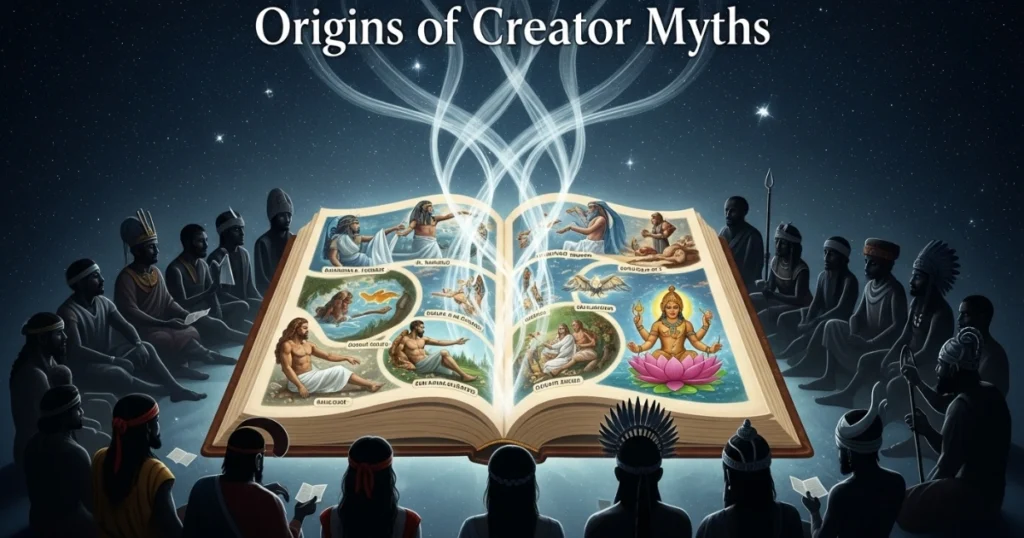
Early Human Imagination
The earliest creator myths emerged from humanity’s need to explain the unexplainable. Without scientific tools, ancient peoples relied on observation and imagination. For example, the Sumerian Enuma Elish (circa 1800 BCE) describes the god Marduk defeating the chaos monster Tiamat to create the world. This myth reflects a worldview where order triumphs over chaos, a recurring theme in early stories.
Similarly, Indigenous cultures, like the Aboriginal Australians, crafted Dreamtime stories. These narratives describe ancestral beings shaping the land and sky, embedding spiritual significance in the natural world. The creator myth evolution began here, with stories tailored to local environments and cultural priorities.
Common Themes Across Cultures
Despite their diversity, creator myths share universal elements. Many feature a primordial void or chaos, a divine creator, or a cosmic struggle. For example:
- Greek Mythology: Gaia emerges from Chaos, birthing the cosmos.
- Norse Mythology: The world forms from the body of the slain giant Ymir.
- Hindu Mythology: Vishnu creates the universe from a cosmic ocean.
These shared motifs suggest a collective human instinct to impose order on the unknown. As societies interacted through trade and conquest, myths blended, setting the stage for their evolution.
The Evolution of Creator Myths
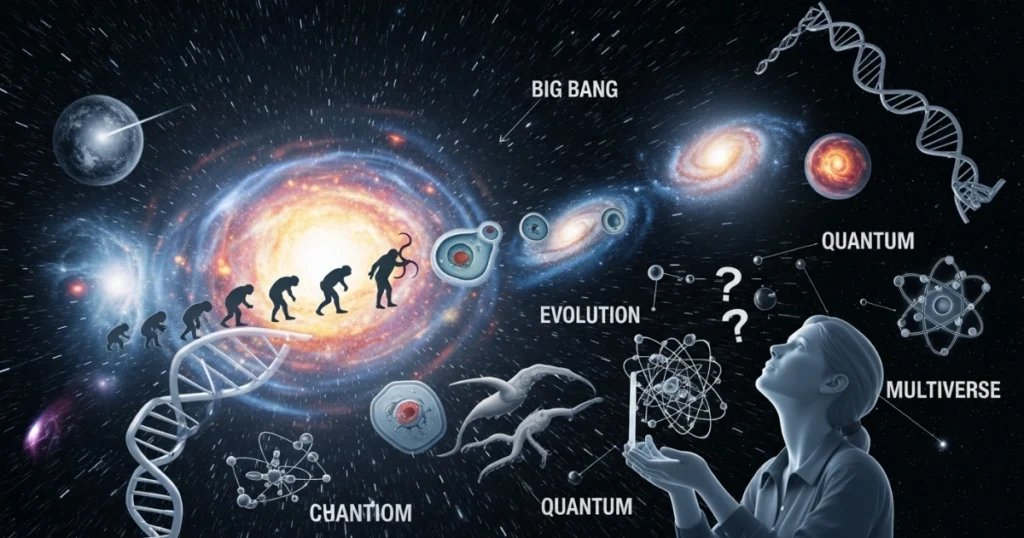
Influence of Religion and Philosophy
As organized religions emerged, creator myths adapted to align with new spiritual frameworks. Monotheistic religions like Christianity, Islam, and Judaism introduced singular, omnipotent creators. The Book of Genesis, for instance, describes God creating the world in six days, a stark contrast to polytheistic tales of warring gods. This shift reflects a move toward centralized authority and moral codes.
Philosophical movements also shaped the creator myth evolution. In ancient Greece, philosophers like Plato questioned mythical narratives, proposing abstract concepts like the “Demiurge,” a craftsman-like creator. This blend of mythology and reason laid the groundwork for later scientific interpretations.
Cultural Exchange and Syncretism
As empires expanded, creator myths merged through cultural exchange. The Roman Empire, for example, absorbed Greek myths, adapting them to fit Roman values. Similarly, the spread of Buddhism across Asia blended local creation stories with Buddhist cosmology, creating hybrid narratives.
For instance, in Japan, Shinto myths of Izanagi and Izanami creating the islands merged with Buddhist concepts of cosmic order. This syncretism enriched myths, making them more complex and reflective of diverse influences. As we’ll see, these adaptations continued with the rise of science.
The Impact of Science on Creator Myths
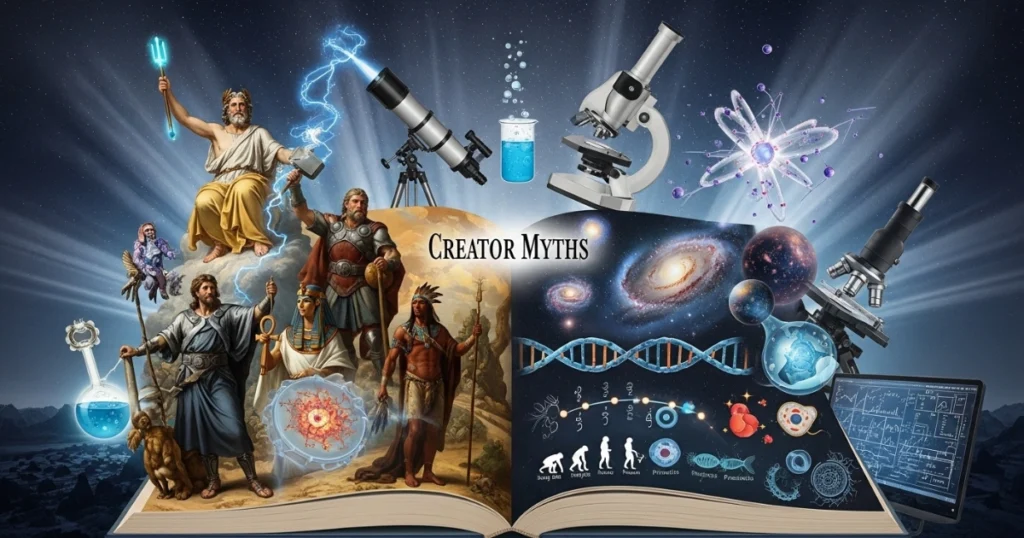
The Scientific Revolution
The Scientific Revolution (16th–18th centuries) marked a turning point in the creator myth evolution. Discoveries like Copernicus’s heliocentric model and Newton’s laws challenged traditional narratives. Instead of divine intervention, natural laws began to explain cosmic origins. This shift didn’t erase myths but reshaped them.
For example, Deism, a philosophical movement, proposed a creator who set the universe in motion but didn’t intervene. This “clockmaker” God aligned with scientific principles while retaining a creator figure. Meanwhile, myths adapted to incorporate scientific ideas, such as the Big Bang theory echoing ancient concepts of a primordial void.
Modern Interpretations
Today, creator myths blend science and spirituality. The Big Bang theory, describing the universe’s origin 13.8 billion years ago, parallels myths of chaos transforming into order. Some religious groups interpret their creation stories metaphorically, aligning them with scientific evidence. For instance, progressive Christians view Genesis as symbolic, not literal, allowing faith and science to coexist.
Pop culture also reimagines creator myths. Films like The Matrix explore simulated realities, echoing ancient ideas of a crafted world. The creator myth evolution continues as science fiction and technology inspire new narratives about artificial intelligence or cosmic engineering.
Cultural Significance of Creator Myths
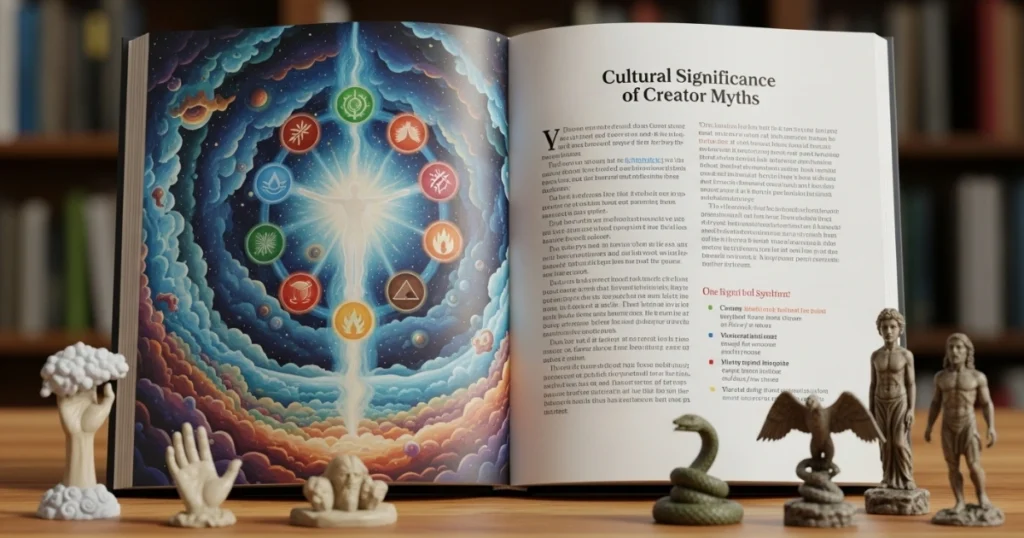
Shaping Identity and Values
Creator myths do more than explain origins; they shape cultural identity. For example, Native American tribes like the Navajo use creation stories to reinforce communal values and connection to the land. These narratives guide ethical behavior and environmental stewardship.
In modern contexts, myths influence national identities. Iceland’s reverence for Norse mythology, for instance, fosters a sense of historical continuity. The creator myth evolution ensures these stories remain relevant, adapting to reflect contemporary values like sustainability or inclusivity.
Influence on Art and Literature
Creator myths have inspired countless works of art and literature. Dante’s Divine Comedy draws on Christian creation themes, while Tolkien’s The Silmarillion crafts a fictional mythology with echoes of Norse and Christian stories. Modern graphic novels and video games, like God of War, reimagine ancient myths for new audiences.
These creative expressions keep myths alive, allowing them to evolve. By blending tradition with innovation, artists ensure the creator myth evolution resonates with modern sensibilities.
Case Studies: Creator Myths Across Cultures
Ancient Egypt: The Ogdoad and Atum
In ancient Egyptian mythology, the Ogdoad—eight primordial deities—represented chaos. From this chaos, the god Atum emerged, creating the world through his will. This myth reflects Egypt’s fascination with order and divine kingship. Over time, it evolved to incorporate Greek influences, with Atum linked to the sun god Ra.
Mesoamerica: The Popol Vuh
The Maya’s Popol Vuh describes gods creating humans from maize after failed attempts with mud and wood. This story emphasizes humanity’s connection to the earth. Spanish colonization introduced Christian elements, blending the creator myth evolution with biblical narratives.
Aboriginal Dreamtime
Aboriginal Australian Dreamtime stories describe ancestral beings shaping the world. These oral traditions remain vibrant, adapting to modern contexts while preserving cultural heritage. Their resilience highlights the enduring power of creator myths.
Challenges and Controversies
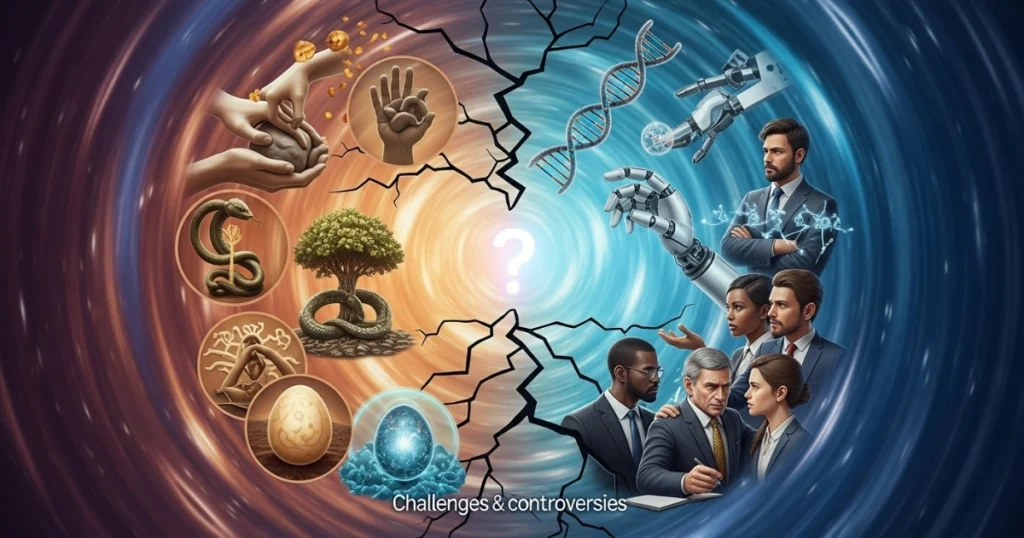
Literal vs. Symbolic Interpretations
The creator myth evolution faces challenges from differing interpretations. Literalist religious groups may reject scientific explanations, creating tension with secular perspectives. Conversely, symbolic interpretations allow myths to coexist with science but risk diluting their spiritual significance.
Cultural Appropriation
As myths spread, they risk being misinterpreted or commodified. For example, Hollywood’s portrayals of Indigenous myths often lack cultural context, leading to accusations of appropriation. Respecting the creator myth evolution requires acknowledging their cultural roots.
The Future of Creator Myths
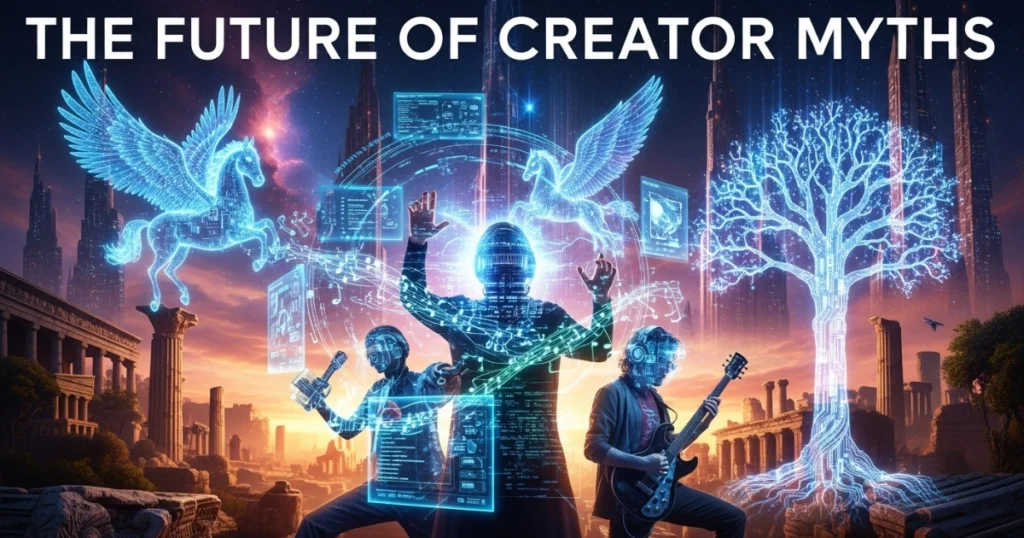
Technology and New Narratives
Emerging technologies like AI and virtual reality are shaping the creator myth evolution. Concepts like the “singularity” or simulated universes echo ancient creation stories. As humans explore space, new myths may arise, blending science fiction with traditional themes.
Globalization and Universal Myths
Globalization fosters shared narratives. The creator myth evolution may lead to universal stories that blend diverse traditions, creating a global mythology. Initiatives like interfaith dialogues promote understanding, ensuring myths unite rather than divide.
Conclusion
The creator myth evolution is a testament to humanity’s creativity and curiosity. From ancient tales of chaos and gods to modern blends of science and spirituality, these stories reflect our deepest questions about existence. They shape cultures, inspire art, and guide values, proving their timeless relevance. As we move forward, creator myths will continue to evolve, weaving new narratives that connect past, present, and future. By understanding their journey, we gain insight into our own.


Creator Myth Evolution: Ancient to Modern Beliefs
Updated on September 8, 2025
Read More